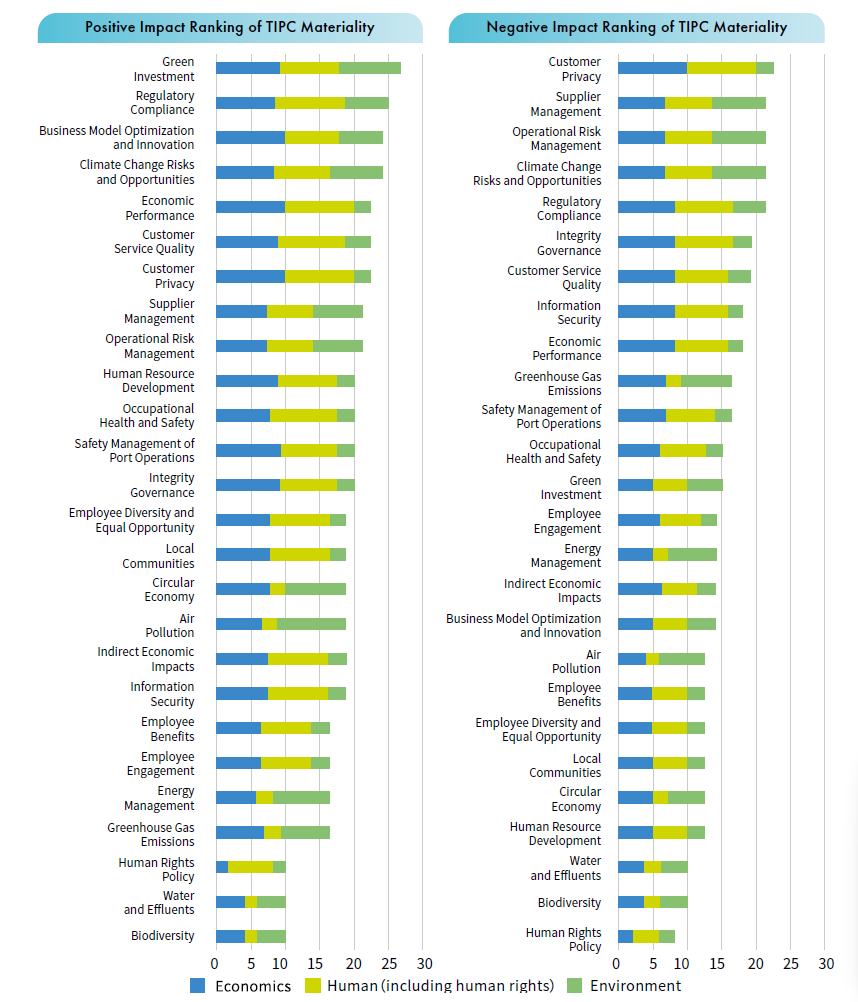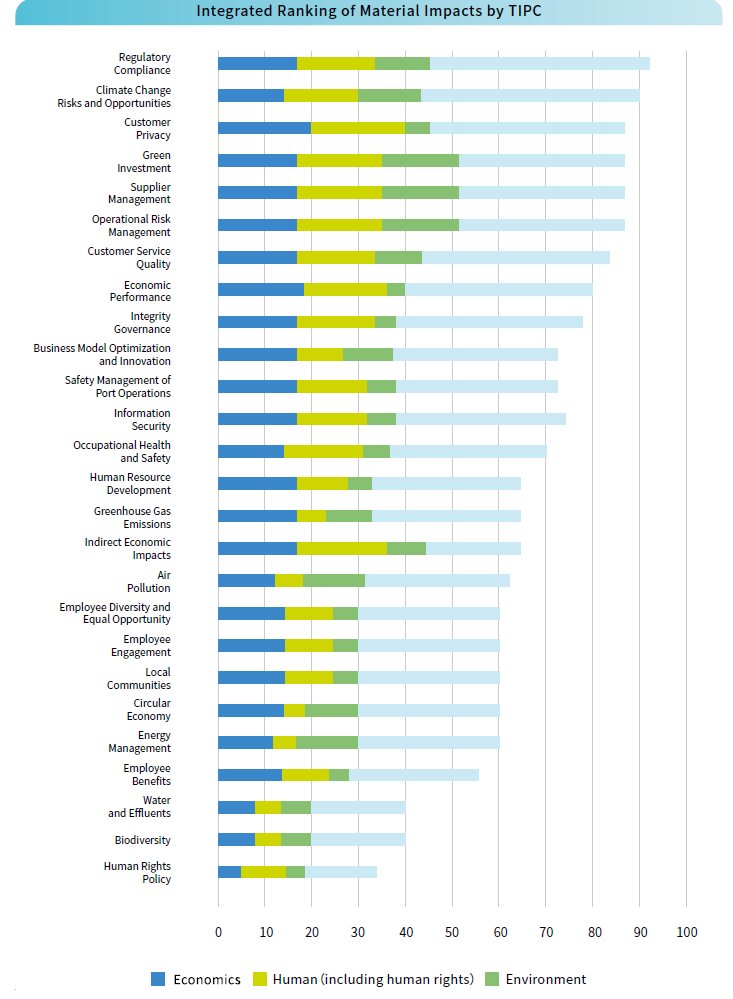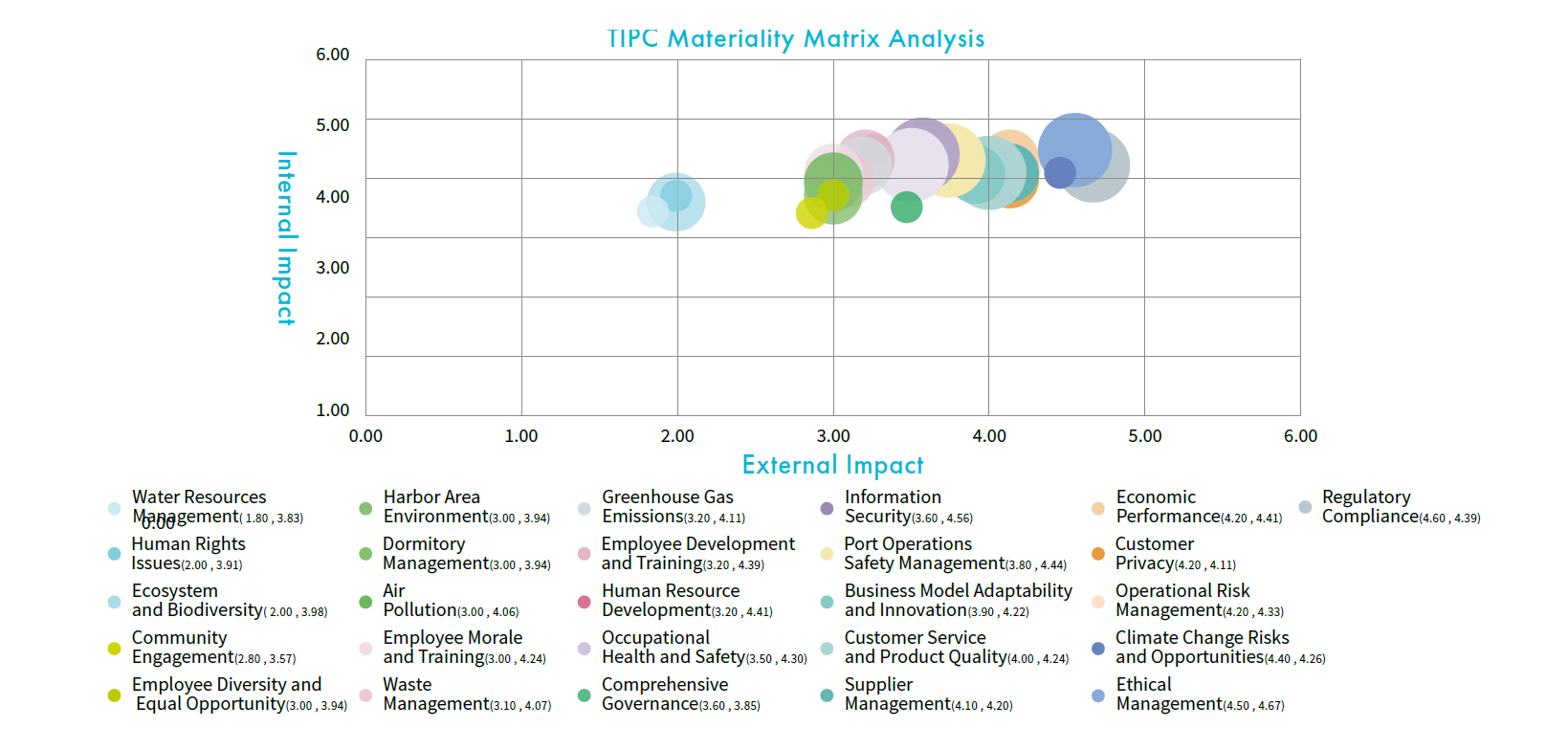Materiality Identification
TIPC conducts materiality analysis in accordance with the 8 reporting principles outlined in the GRI Standards 2021: Accuracy, Balance, Clarity, Comparability, Completeness, Sustainability Context, Timeliness, and Verifiability. The sustainable issue management process follows a four-stage approach as outlined below:
STEP1 |
Identification of StakeholdersStakeholders Inclusiveness 10Categories of Stakeholders |
|
STEP2 |
Prioritization of ESG TopicsSustainability Context 26topics of concern |
To ensure alignment with the sustainability context, the identification of key topics was guided by the Global Reporting Initiative (GRI Standards), the Sustainability Accounting Standards Board (SASB), and the United Nations Sustainable Development Goals (SDGs), along with a review of peer industry disclosures. A total of 26 sustainability topics were compiled across three ESG dimensions—economic (including corporate governance), environmental, and social (including people and human rights). These topics formed the basis for assessing both positive and negative impacts during the materiality assessment process. |
STEP3 |
SIdentification of Material TopicsMateriality Based on the responses from 54executive-level management questionnaires 17sustainability-related material topics were identified. |
|
STEP4 |
Review and DiscussionPrinciple of Completeness |
Following the identification of material topics and their respective boundaries, TIPC incorporates priority topics into its annual plans and objectives. The Company will continue to strengthen its management mechanisms, review the material topics for any necessary adjustments, and disclose relevant information in the sustainability report. |
Material Topics Prioritization
In alignment with the GRI Standards 2021 and incorporating the relevant GRI Sector Standards as a reference for sustainability topics, a total of 17 material topics were identified through the aforementioned ESG Materiality Analysis conducted this year.

Positive Impact & Negative Impact Ranking of TIPC Materiality

Integrated Ranking of Material Impacts by TIPC
TIPC Materiality Matrix Analysis
To understand the material issues of concern to its stakeholders, TIPC conducted a questionnaire survey based on 26 topics of interest, targeting 10 stakeholder groups: government authorities, shareholders/investors, employees, customers, legislators, equity investment businesses, suppliers/contractors, county and city governments, media, and community residents/local groups. A total of 102 stakeholders were invited to participate in the survey. The Company referenced the level of stakeholder concern as an important basis for sustainable development and strategic planning, in order to effectively respond to stakeholder needs.

TIPC Materiality Matrix Analysis